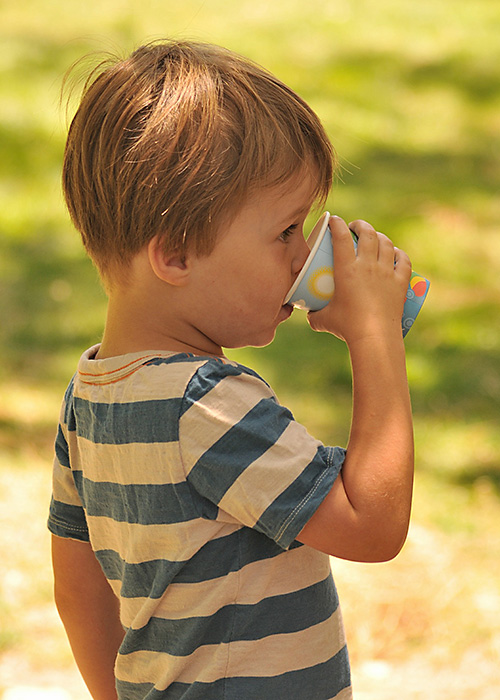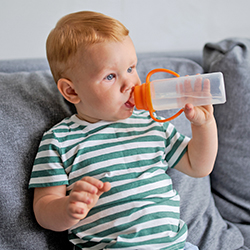by Great Falls Clinic Pediatrics
Nothing is quite as refreshing as a glass of cold water on a hot summer day. Warmer days come along with increased time outside, especially for children. With all the fun from being outside, children tend to forget to drink water and can become easily dehydrated.
Did you know that children get dehydrated faster than adults?
- Scientists believe that this is because they produce more heat yet sweat less. They also have a larger body surface area to mass ratio.
How can you know that your child is dehydrated?
- For babies, fewer than 3-4 wet diapers in a 24 hour period, decreased activity, decreased tears, and a sunken soft spot signal dehydration. Fortunately most babies are not as active as older children, nor do they spend as much time outside. However, watch out for these symptoms if they do get an illness with vomiting and/or diarrhea.
- For older children and adolescents, symptoms of dehydration include dark urine, fatigue, feeling dizzy or light-headed, confusion, irritability, and a dry or sticky mouth.
 By the time your child tells you that she is thirsty, they are already dehydrated!
By the time your child tells you that she is thirsty, they are already dehydrated!
How can you ensure that you and your children remain hydrated this summer?
- Water, water, water! Ensure that your child is drinking plenty of water. Give them a water bottle to carry around when they’re out riding bikes or playing with friends. Set a timer to have them drink cold water about every 15-20 minutes during outside play time.
- Are they finding water boring? You could flavor it with fresh fruit to enhance the taste. Other great sources of water are juicy fruits like watermelon. Fresh fruit popsicles are also delicious and hydrating. Avoid caffeinated drinks like soda as these tend to increase dehydration.
- Encourage staying in the shade or wearing a hat while outside. In addition to decreasing the risk of dehydration, this has the added benefit of protecting your child from a sunburn.
- Limit outside time during the hottest times of day to decrease heat exposure and eventual dehydration. The hottest times tend to be between 10 a.m.- 4 p.m. Thankfully it remains light longer in the summer which makes it possible to enjoy the outdoors at cooler times.
- For athletes training during the summer, the American Academy of Pediatrics recommends 5 to 9 ounces of cold water every 20 min during the workout, depending on weight. Heavier athletes should drink more. Cool electrolyte-infused drinks may also work, but be aware of the sugar content.
- Don’t be fooled by swimming. It gives children the idea that they are hydrated because they’re in water, yet they can easily get dehydrated. Monitor their water intake as closely during swimming as during other activities.
What should you do if your child gets dehydrated?
- Move him to a shaded location
- Have her drink cold water.
- Cool washcloths on the face, neck, armpits, groin to help cool down.
- If your child has hot, dry skin, has a really high body temperature, gets a seizure, or loses consciousness, CALL 911 then do the above, as these may be symptoms of a heat stroke.
